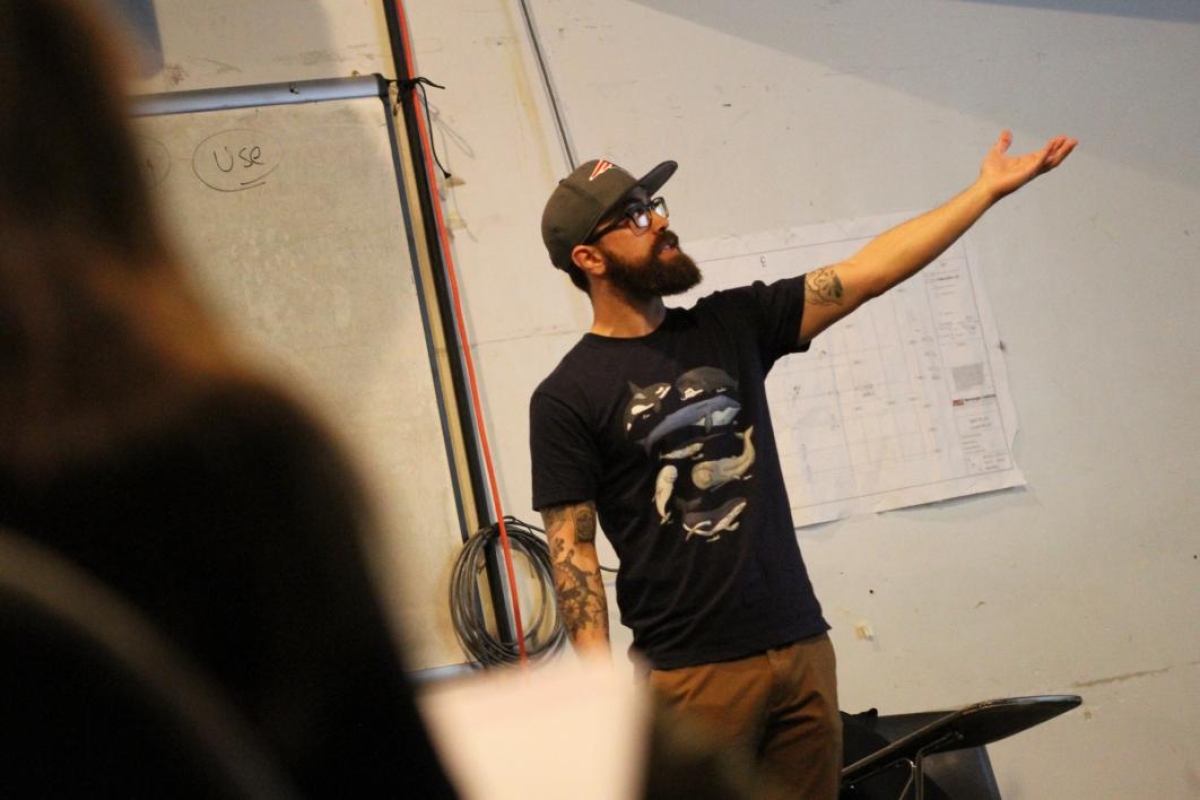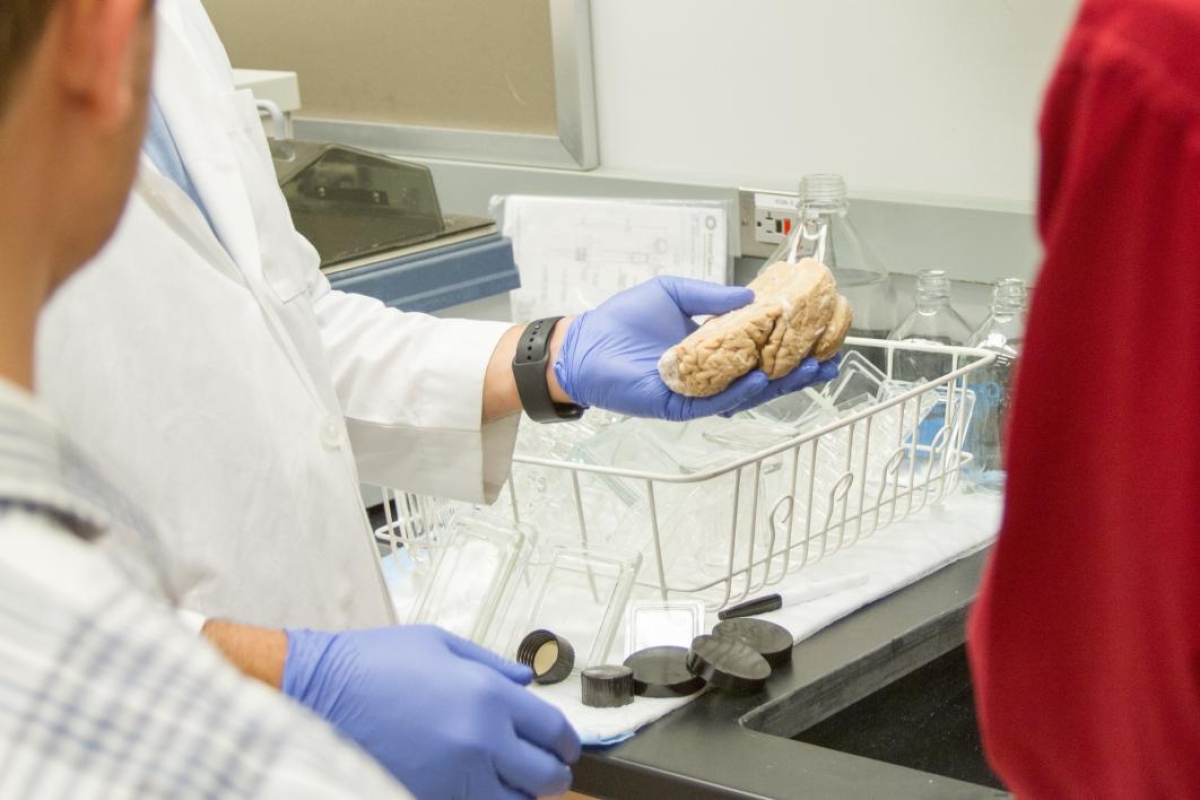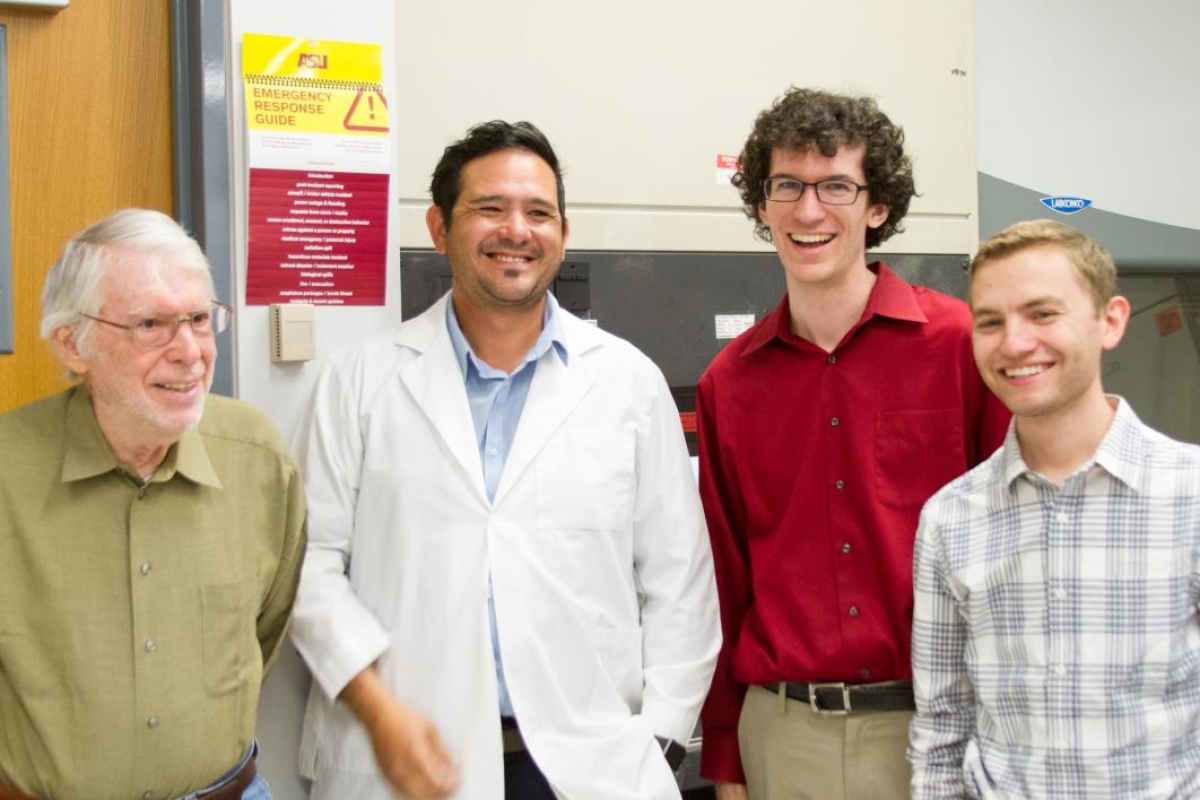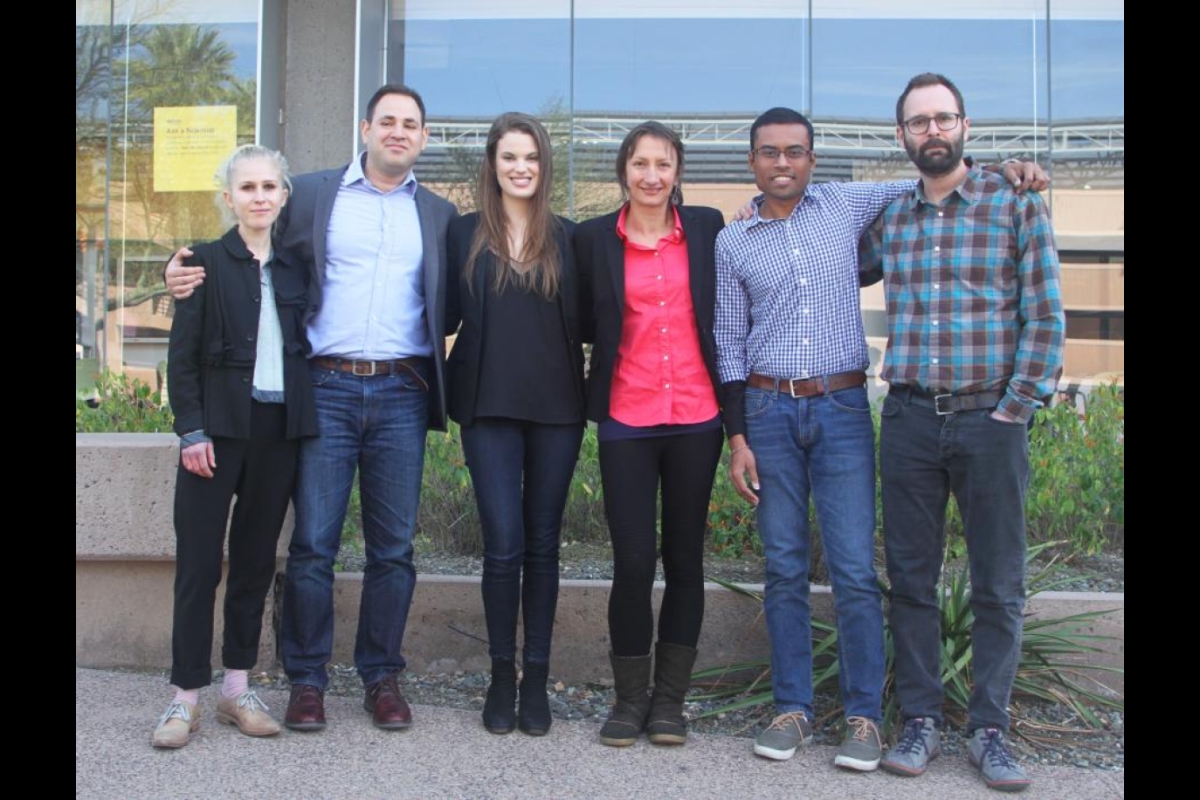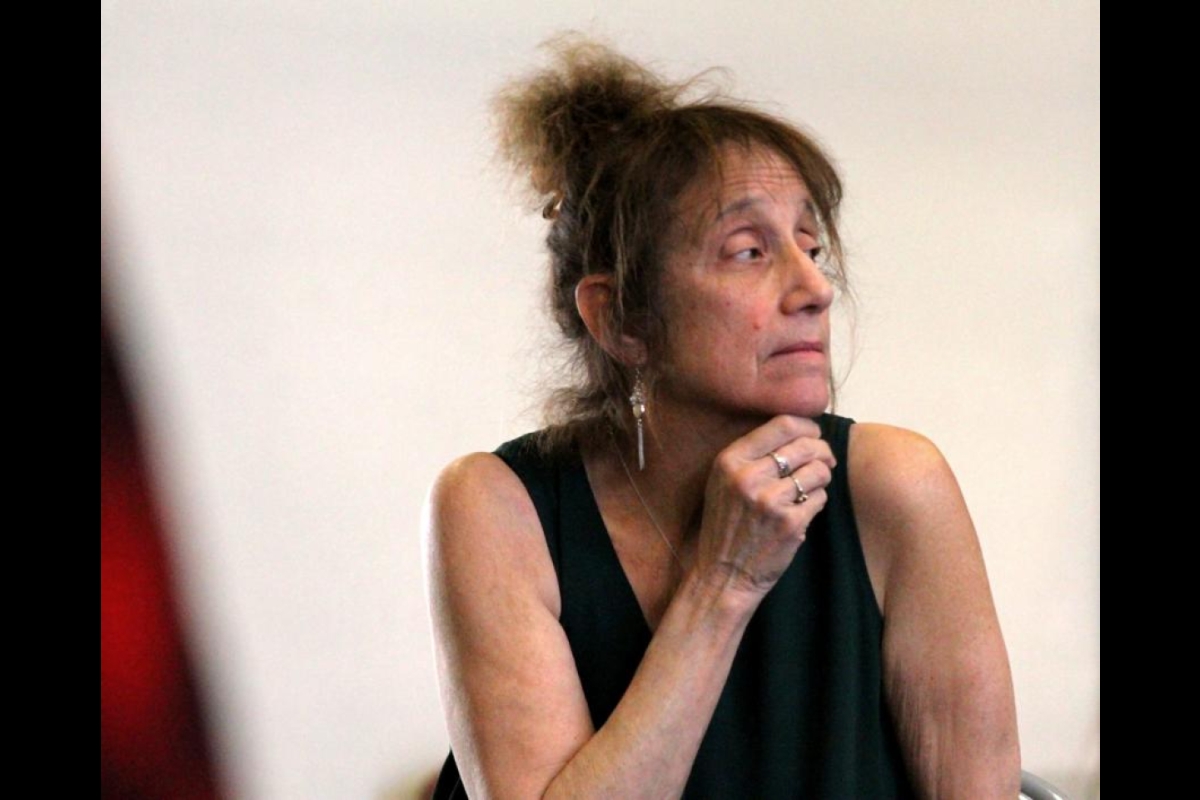‘Science Exposed’: Performance art meets science in experimental collaboration
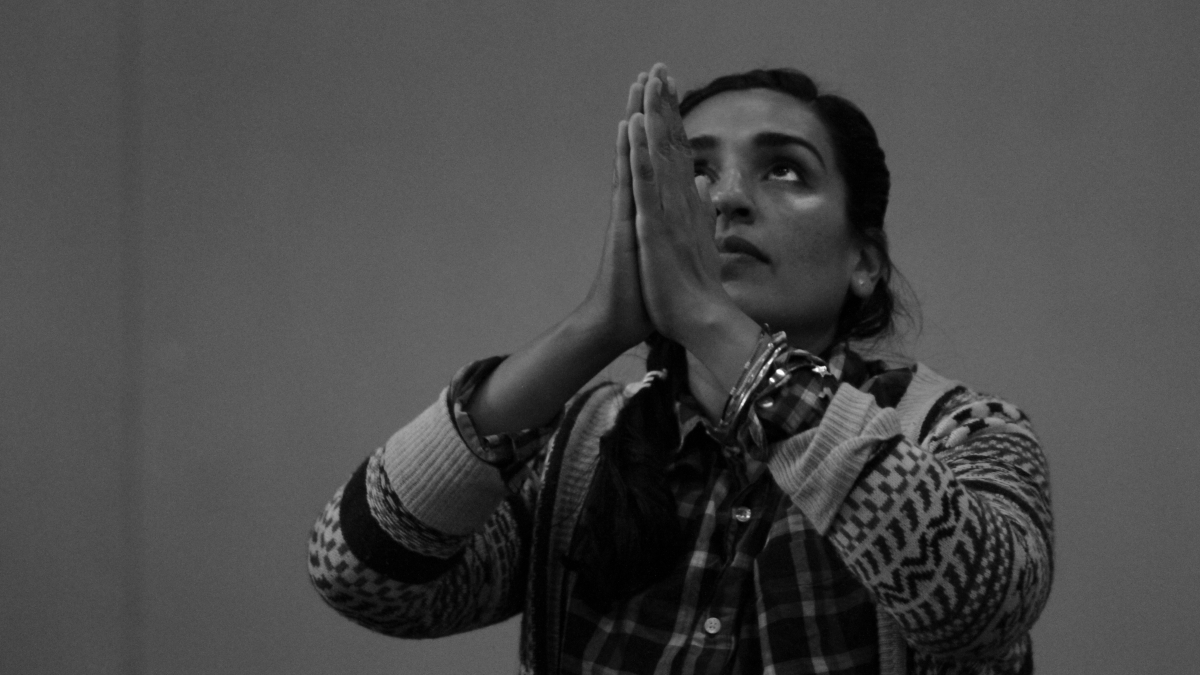
Artist vs. scientist. Right vs. left brain. Creativity vs. stark logic. When the seemingly separate worlds of art and science collide, will they produce chaos or a masterwork?
This semester, in a new “Science Exposed: Bringing Science to Life through the Arts” initiative, a dozen of ASU’s Herberger Institute artists and Biodesign Institute scientists are about to find out what happens when art and science collide.
Three diverse projects now underway may give audiences pause and challenge their intellectual and emotional ideas about science.
“They certainly have inspired new ways of thinking among scientists and artists alike,” said Dianne Price, Biodesign Institute director of communications and marketing.
“The lightning-quick advance of science and technology can make understanding science nearly impenetrable for those of us not in the lab every day. At the Biodesign Institute, we consider it a privilege and a responsibility to engage others in our work. Our goal with ‘Science Exposed’ is to transcend sometimes alien scientific language and communicate with sound, movement and art.”
Movement can evoke how the body labors through the ravages of cancer. An original, orchestral score can give listeners a new way to understand the minds of those afflicted with Alzheimer’s disease. Students at ASU’s School of Arts, Media and Engineering are grappling with the social implications of genetic engineering as part of an international Biodesign Challenge competition.
For artists, designers and scientists, these projects are a chance to guide students and challenge them to dive deeper into subjects with the folks who are at the front edge of knowledge, and to stretch everyone’s skills in new directions.
“Our faculty mentors are great examples of the ‘new American artist’ at ASU, said Tamara Underiner, associate dean for research for the Herberger Institute for Design and the Arts. “They’re at the top of their artistry and craft, but they’re not content to develop that craft in isolation from other disciplines or indeed the world itself, and they’re modeling for our students a new way of being artists in the world.”
Together, they may very well change our perceptions of the prevailing cultural norms, myths and stereotypes of both the artist and the scientist through the creation of indelible works of art.
Contemporary movement, dance and theater
Liz Lerman, a world-renowned modern dance choreographer and MacArthur Fellow, is leading the dance collaboration, engaging tools of movement, performance and media. Lerman and her students are meeting with a handful of scientists from Biodesign to discuss and better understand the motivations behind their research.
“I want to give my students an opportunity to see how personal various subject matter can be, even when the scientific jargon may be difficult or quite esoteric,” she said.
She has two overarching goals for the project.
From the perspective of dance, theater and performance, she wants her students to “realize that there is no subject matter that they cannot take on. I want them to see that sometimes you have to tell other people's stories, that the stories of our time may live in science,” Lerman said. “On the science side, showing scientists the creative process may affect not just their communication, but the way they think about reaching the public or even what’s important about their own work.”
Charles Rolsky, a graduate student in the Biodesign Center for Environmental Security who is working with students in Lerman’s class, agrees.
“I thought I was simply going to be discussing my work and fielding questions,” Rolsky said. “After meeting with the professor and students in the class, I am now thinking so much more about how to find and utilize creativity and imagination within my own research. How can I find creative ways to connect people with what I am doing? How can I display this data in a different way, which may reach more people and open more doors into their minds and hearts?”
Lerman’s students have been shadowing scientists in their labs at the Biodesign Institute so they can better understand what motivates the research and what can be made meaningful to the public. The students are crafting unique site-specific performances that will animate the research, bringing complex subjects to life — such as the interpretative dance routine of scientific research pictured at the top of this story.
A neuro-classical composition
As part of Herberger’s new Design and Arts Corps, graduate student composers Stephen Mitton and Zachary Bush are spending time at Biodesign in residency at the ASU-Banner Neurodegenerative Disease Research Center. The composers are learning about Alzheimer’s disease and dementia with lead neuroscientists Diego Mastroeni and Paul Coleman. From this very intimate look into the science, the composers will construct a symphony of the brain.
“Artist and scientist are both wandering minds, always searching for the unknown,” said Mastroeni.
“Most often what musicians and scientists find in their investigations are not planned. The unknown often illuminates new directions for research or music. Maybe it’s a crescendo where a decrescendo was planned, or sequencing the genome for a specific polymorphism and finding another.”
“Has this surprised me?” he continued. “No. What surprises me are those who cannot see the overlap between the disciplines. Pursuing inquisitive scientific hypotheses in concert with musical talent is the kind of collaboration that brings humanity to science. Science is often not approachable, but music can bridge this gap."
Graduate composer Mitton may have just the right mind-set required to decode complex scientific information and bridge the gap Mastroeni mentioned.
“I receive a lot of inspiration from biological processes, natural phenomena and scientific inquiry. When I learn something from one of these areas that catch my attention, I often find myself imagining how I can translate that concept to music,” Mitton said.
He recently finished his thesis composition, which is based on an atmospheric phenomenon called a parhelion. Some aspects of the piece are based on numerical values associated with the refraction of light as it passes through ice crystals in the atmosphere.
The project will culminate in a live performance and recording of the music Mitton and Bush create, told from different perspectives of scientist and subject. Their goal is to demonstrate the havoc these diseases can unleash on the brain.
“As part of our mission of creating collaborative partnerships between artists and others in the ASU community and beyond, we are thrilled with this first opportunity to merge musicians with neuroscience and the research taking place at the Biodesign Institute,” said Stephani Etheridge Woodson, director of Herberger Institute Design and Arts Corps.
The Design and Arts Corps is rooted in community initiatives, needs and goals as identified by organizations, individuals and agencies from across ASU’s cities, state and region. This participatory engagement places Herberger Institute students, faculty and staff in direct and ethical collaboration with the community in executing the design- and arts-based programming/actions that activate community goals while facilitating experiential learning and use-based research.
The Biodesign Challenge
For the first time, ASU has entered the Biodesign Challenge. The international competition offers art and design students the opportunity to envision how profoundly biotechnology may impact society in the future.
Only recently has the tool kit of genetic engineering become inexpensive enough to perform in your own kitchen, fostering a community-grown “bio-art” movement similar to the hacking culture of computing.
The competition is sponsored by a community bio lab in New York called Genspace. Its founders wanted to foster scientific ideas among non-science students under the philosophy that they might bring a unique sense of creativity to the scientific community.
Genspace co-founder Daniel Grushkin mentioned that there “was only so much you can do in a living room with biology” so they created Genspace as an open art space, colonizing a building in downtown Brooklyn. From the first Genspace, there are now 87 similar groups around the world.
Artists involved in the program have created an array of wacky and sometimes unnerving examples of biotechnology, such as mini blimps piloted by common flies or flesh-like clothing that you can eat after wearing.
“We want students entering the competition to be thinking into the future,” said Grushkin. “If this technology will integrate into the world, as a culture, we need to think about what do we want and don’t want. The ethics are really unclear. The technology seems limitless. A cell can divide and grow the future rather than assemble the future.”
ASU has organized a class around the challenge and will send one installation to the international competition in New York this summer. The class is being led by Stacey Kuznetsov, an assistant professor at the School of Arts, Media, and Engineering.
Kuznetsov is excited about the opportunities for creative exploration to come out of this project.
“Exposure to projects across domains enables us to uncover unexpected connections and adopt more holistic approaches within our own work. Together, these factors lead to creative discovery and inspire us to more boldly take on big challenges,” Kuznetsov said.
Gathering non-science students to interpret the future brings a valuable diversity of ideas to the engineering and science realms. The installations may introduce a vision of the future that the world has not seen before.
Broader appeal
Through the creative process, each student will be personally challenged to interpret the leading edge of science in a unique artistic expression.
The hope is, through this collaboration, they may also inspire other scientists, artists and audiences to change their worldview of what is possible when artists and scientists come together for a common purpose.
“We hope to grow collaborations like these between Herberger and Biodesign because we see it as a win-win for everyone,” Underiner said.
An invitation to the ‘Science Exposed’ performances
“This is a true experiment in transdisciplinary thinking,” said Price. “As the nation’s number one university for innovation, we are in constant pursuit of ways to stimulate creativity for our students, our faculty, our researchers and our staff.”
The “Science Exposed” performances are free and open to the public. They will take place on Wednesday, April 26, at the Biodesign Institute. The performance will begin at 6:30 p.m.
For more information, contact Dianne Price at dianne.price@asu.edu or 480-727-3396.
Written by Gavin Maxwell
Top photo: Herberger Institute for Design and the Arts student Roopa Kaushik Brown practices her interpretative dance routine of scientific research as part of her project.
More Science and technology

Stuck at the airport and we love it #not
Airports don’t bring out the best in people.Ten years ago, Ashwin Rajadesingan was traveling and had that thought. Today, he is an assistant professor at the University of Texas at Austin, but back…

ASU in position to accelerate collaboration between space, semiconductor industries
More than 200 academic, business and government leaders in the space industry converged in Tempe March 19–20 for the third annual Arizona Space Summit, a statewide effort designed to elevate…

A spectacular celestial event: Nova explosion in Northern Crown constellation expected within 18 months
Within the next year to 18 months, stargazers around the world will witness a dazzling celestial event as a “new” star appears in the constellation Corona Borealis, also known as the Northern Crown.…


